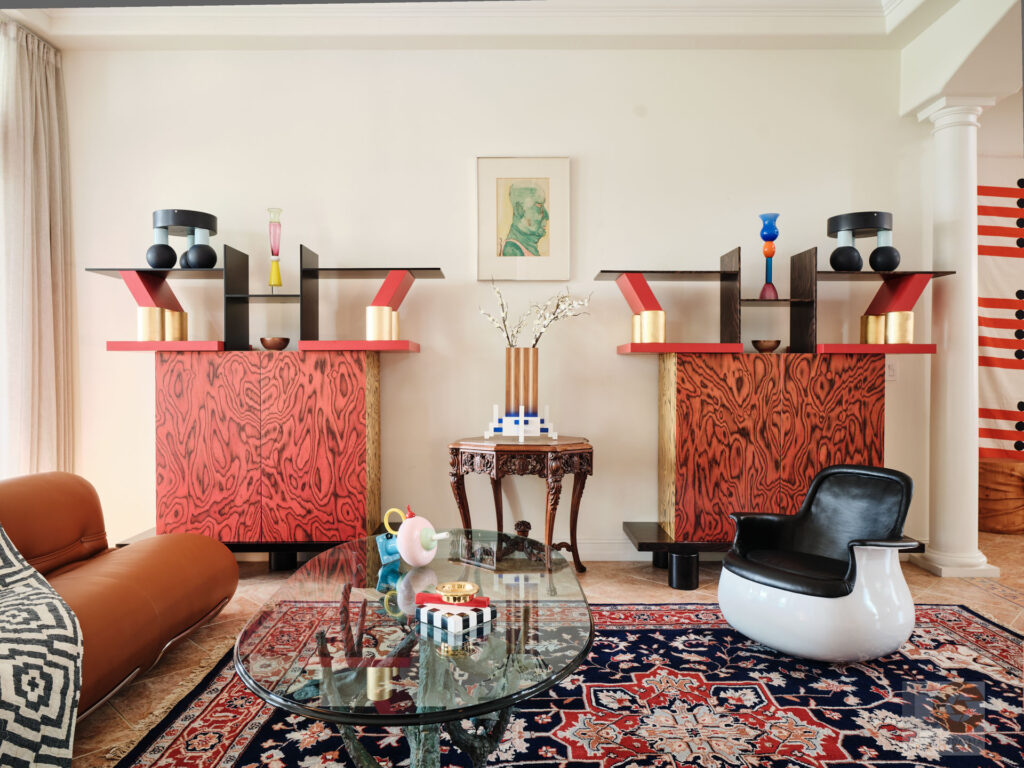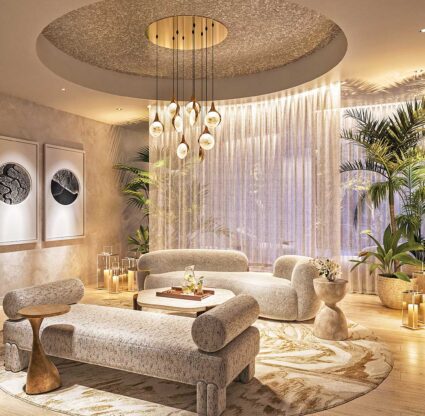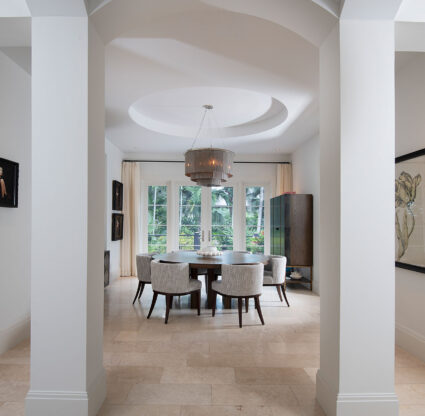On April 4, Naples couple Kelly and Mike Mahigel woke up to the news that Gaetano Pesce had died. For many, the news was a blip. The design aficionados among us lamented the loss and maybe raised a glass to the maestro of radical design, who broke all the rules to bring about furnishings that were as probing as they were joyful. To the Mahigels, a pair of postmodern collectors and dealers, the news was everything. “He’s considered this huge enigma for bringing art, fashion and design together,” Mike says. “And, he’s had this incredible renaissance at the end of his life and has been doing some of his best work in recent years.”
It’s hard to calculate exact figures in the collectible design sphere, but the couple believes they have the largest repository of Gaetano Pesce’s work in the country, with 35 of the designer’s genre-defying pieces. That morning, one of Pesce’s Senza Fine chairs went for $20,000. “People were just starting to discover him in recent years from his partnership with Bottega Veneta and grander exposure in the art world,” Mike says. “He died in a parabola of exposure.”
Spontaneous design dissertations are common at PDA Gallery, the Mahigels’ new Naples Design District showroom, on the corner of Tamiami Trail and Ninth Street South. Nearing 40—with two kids and ready to retire from careers in asset management and real estate—Kelly and Mike moved to Naples last summer and quietly opened PDA in the fall. By January, the word was out.
The showroom is an expression of all the things the duo love. “It’s like the name says—this is a public display of our affection,” Kelly says. “Everyone thinks we’re trying to be ethereal, and no, we’re on the nose—we want people to understand it.”
If you’re into design, it can feel like a mirage when you stumble across the strip mall gallery. You might see living room-like arrangements with a translucent Shiro Kuramata Ghost lamp next to a Tetris-like, robot-shaped Alessandro Guerriero Filosofo cabinet, and a Carl Fredrik Svenstedt undulating, wooden bench nearby. Sometimes, they hone in with an exhibit, covering a subgenre from their 200-plus-piece collection that’s constantly being replenished (currently, an ode to Pesce; next month, it may be Japanese postmodernism, with Kuramata and Shigeru Uchida).
Exposure and education are part of the mission for PDA, which emphasizes experimental postmodern design from the 1970s to early 2000s. “That’s when you have the pendulum swing from utility-driven true modernists—Le Corbusier, Charlotte Perriand—to complete ornamentalism and decoration,” Mike says. “It’s a very controversial era.”
Always ones to march to their own beat, the Mahigels like to live in that space of discovery. While they trade in any collectible design that’s rare and radical, their specialty is out-of-production postmodern works.
Mike compares their avant-garde design with sushi. “It’s like uni,” he says. You might be familiar with and love the salmon and tempura shrimp rolls, but the slimy, oceanic sea urchin is an acquired taste. You have to acclimate to the foreign piece in front of you, get to know it, learn its materiality, where it came from, how it was made, what was happening when it emerged.
Growing up, Kelly and Mike had both been counterculture kids into thrifting and vintage (“I was obsessed with Space Age Modern,” Kelly says). In adulthood, their collecting gateway was the estate sale-find of a 1966 Pierre Paulin Ribbon Chair, about 10 years ago. “The pool became an ocean,” Mike says. Mike, a research-driven asset manager by training, dove into the history and throughlines—how furniture design connects to architecture, design, fashion, art and informs our cultural narrative. He thinks of collectible design as others think about wine or cars. “It becomes this cultural diaspora,” he says. Kelly was drawn to the thrill of the hunt and the beauty of the furnishings.
Around 2016, the couple started flipping houses. With every new home, they’d skip the neutral, turn-key palette developers hope will appeal to the masses. “We always furnished and styled the home in the manner the home demanded,” Kelly says. A 6,000-square-foot Midwestern manse with Old English vibes might get wall-to-wall houndstooth wallpaper and Mastercraft brass vitrines. Instead of displaying fine china, they filled the cabinets with funky Memphis Milano ceramics.

While Mike is the walking design encyclopedia, Kelly is the aesthete and offers design services and consults for people who want to branch out. “We want to show people that these pieces can work in any space,” Kelly says.
The couple owns their entire reserve outright. “If we’re not willing to own it, why would we sell it?” Mike posits. Furnishings move between their Design District gallery, Downtown Naples home, and a series of 10-by-20-foot storage units scattered across Southwest Florida at higher, hurricane-weary ground. Less-precious pieces that can take a beating from their 3- and 5-year-olds go to their North Naples apartment.
Despite its 2,500-square-foot size and lakefront locale, the Mahigels’ Downtown Naples home isn’t exactly a beaute by modern-day standards—and they’ll be the first to tell you that. One of those dated, 2000s Tuscan builds, the house still has its dark trim, raised-panel cabinets and a wealth of arches. But, it looks charming and inspired against the bombastic furnishings, like the pair of Memphis Milano cabinets in the living room—one a 2000s reissue, the other an original. Across the room, there’s a museum-worthy Ettore Sottsass Tartar Table that’s thought to be a prototype, and in the living room, a pastel-hued Alessandro Mendini cabinet. Afghan prayer rugs underfoot somehow tie it all together. Kelly likes to quote Leah Ring, of California, experimental design studio Another Human: “Life is way too short for a beige sofa.”




